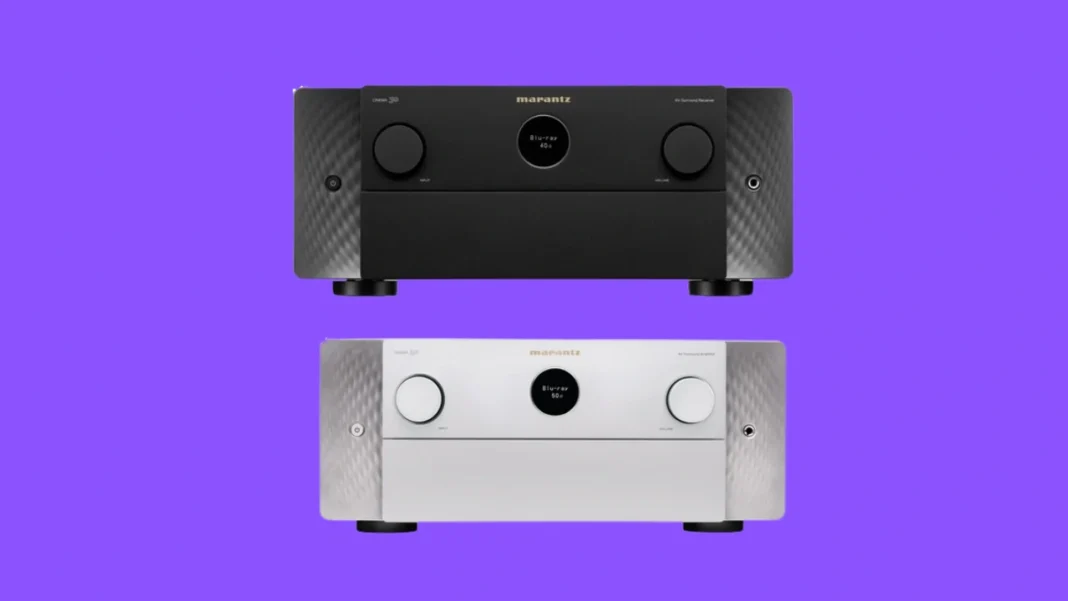In the world of high-end audio-video receivers, Marantz is known for blending refined sound quality with modern home theater capabilities. Within their current lineup, the Cinema 30 and Cinema 40 stand as two closely related models aimed at serious enthusiasts. Both receivers bring extensive format support, advanced calibration tools, and future-ready video connectivity, but they differ in channel count, amplification power, and a few key features. After carefully reviewing their specifications and design choices, we can see where each one excels. Let’s take a closer look at how the Cinema 30 and Cinema 40 compare, and which might be the better fit depending on your system goals.
In This Comparison:
Marantz Cinema 30 vs. 40: Specifications
| Marantz Cinema 30 | Marantz Cinema 40 | |
|---|---|---|
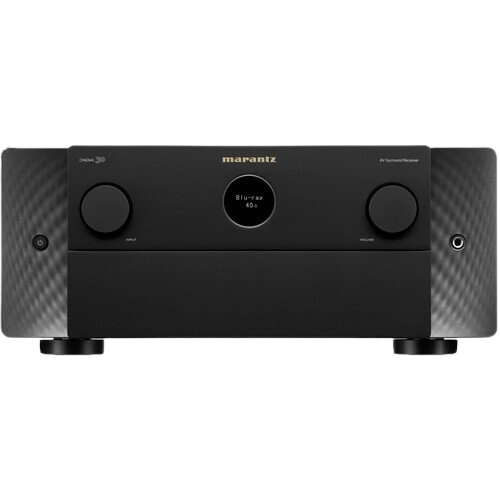 | 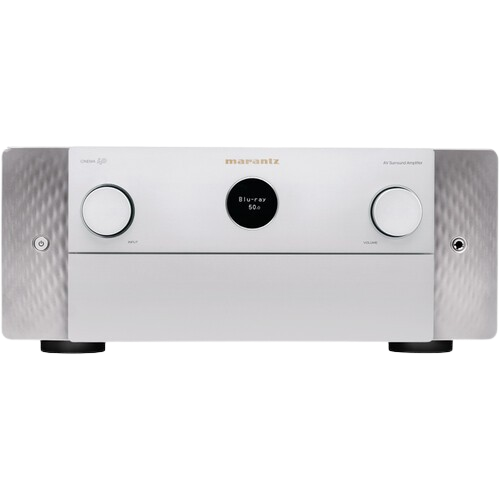 |
|
| Model Year | 2024 | 2023 |
| Number of Channels | 11.4 | 9.4 |
| Stereo RMS Power (watts) | 140W (8 Ω, 20 Hz - 20 kHz, 2 channel driven) | 125W watts per channel (8 ohm, 20Hz-20kHz, 0.08% 2ch Drive) |
| Hdmi Inputs/Outputs | 7 / 3 | 7/2 |
| Video Upscaling | 8K/60Hz or 4K/120Hz | 8K/60Hz or 4K/120Hz |
| Weight | 42.8 lbs | 33.3 lbs |
| Today's Best Price | Find on Amazon | Find on Amazon |
Before diving deeper, it’s worth taking a closer look at the specifications tables above. The Cinema 30, launched in 2024, expands the channel count to 11.4 with 140 watts per channel, while the Cinema 40, introduced in 2023, supports 9.4 channels at 125 watts per channel. The Cinema 30 also adds an extra HDMI output compared to the Cinema 40, giving it more flexibility for multi-display or projector setups. Build weight is another telling difference: the Cinema 30 comes in at 42.8 lb, a substantial increase over the Cinema 40’s 33.3 lb, pointing to heavier-duty components and power supply design. These upgrades, however, come at a premium—roughly $1,000 more than the Cinema 40. With these baseline differences in mind, we’ll now turn to our hands-on testing to see how they translate into actual performance.
Design and Build
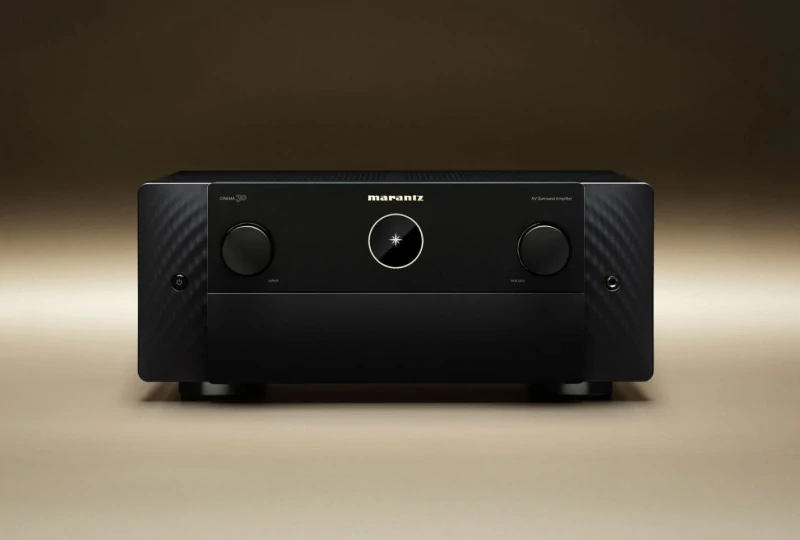
When it comes to appearance, the Cinema 30 and Cinema 40 share Marantz’s modern design language: a clean front panel with subtle curvature, analog knobs for input and volume, and the brand’s signature porthole display at the center. In our testing, we had the black version of the Cinema 30 and the dark silver version of the Cinema 40, and both finishes looked premium and understated, fitting seamlessly into a high-end theater setup. The main distinction lies in their size and weight. The Cinema 30 measures 17.4 x 7.5 x 17.6 inches and weighs a hefty 42.8 lb (19.4 kg), while the Cinema 40 is slightly more compact at 17.3 x 7.3 x 16.2 inches and weighs 33.3 lb (15.1 kg). The Cinema 30’s added bulk reflects its larger power supply and extra amplification channels, but in practice, both receivers feel solidly built and engineered to last.
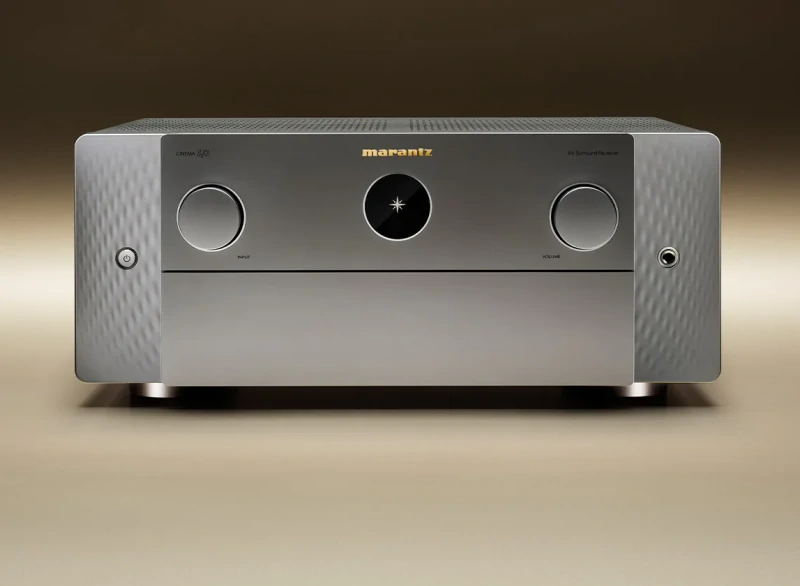
Winner: a Tie
Connectivity and Setup
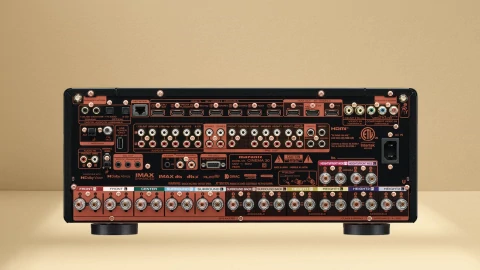
During our testing, we found that both the Marantz Cinema 30 and Cinema 40 provide extensive connectivity, easily accommodating demanding home theater systems. Both units come equipped with seven HDMI inputs, all supporting 8K UHD HDR, but their outputs differ slightly. The Cinema 30 includes three HDMI outputs, compared to the Cinema 40’s two, giving the Cinema 30 an edge for users running multiple displays or combining a TV and projector.
Get the Best Deal on Amazon Today!
On the audio side, both models offer optical, coaxial, and RCA inputs, along with a phono stage for turntables. The Cinema 30 features 13 pairs of binding posts to match its 11.4-channel configuration, while the Cinema 40 provides 11 pairs for its 9.4-channel setup. We also noted that the Cinema 30’s additional weight and more robust rear panel layout gave the impression of a heavier-duty build.
Winner: Marantz Cinema 30
Setup Experience
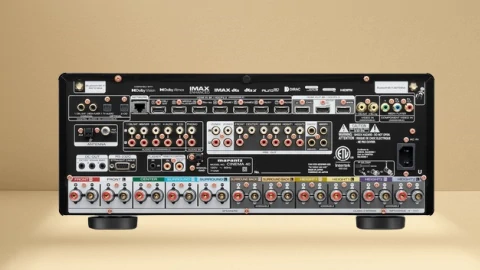
In terms of setup, both receivers impressed us with their calibration options. Each supports Audyssey MultEQ XT32 as well as Dirac Live, and using the supplied microphone, we were able to tune both systems to our test room with accuracy. The process was straightforward on both units, though we appreciated the Cinema 30’s slightly more flexible HDMI output arrangement when configuring multiple zones.
Both models integrate smoothly with smart ecosystems, offering Alexa, Google Assistant, and Siri support, along with app-based control via the Marantz AVR Remote. We also made use of HEOS and AirPlay 2 during testing, and streaming worked flawlessly in both cases.
Overall, while the Cinema 40 covers all the essentials, the Cinema 30’s extra HDMI output and expanded speaker connections make it more versatile for complex setups.
Audio Performance
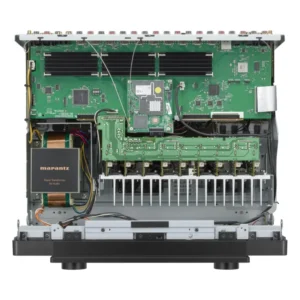
During our testing, the Marantz Cinema 40 delivered a polished and balanced sound signature that aligns with Marantz’s reputation for warmth and musicality. With its 9.4-channel Class-AB amplifier rated at 125 W per channel (2 channels driven, 8 ohms), it had no trouble powering a mid-sized 5.1.4 Atmos setup in our room. Dialogue came through with excellent clarity, and bass performance was controlled without feeling overemphasized. We ran a variety of content, from dialogue-heavy dramas to action films with demanding Dolby Atmos soundtracks, and the Cinema 40 consistently maintained composure without strain. Formats such as Dolby Atmos, DTS:X, and Auro 3D all performed convincingly, with immersive height effects and natural transitions between channels. Dirac Live calibration added a noticeable refinement, especially in tightening bass and smoothing out high-frequency reflections in our space.
Get the Best Deal on Amazon Today!
Switching over to the Cinema 30, the additional power on tap—140 W per channel into 8 ohms (2 channels driven)—was immediately noticeable, particularly in scenes with wide dynamic swings. Running an 11.4 setup, the Cinema 30 created a larger soundstage, with greater headroom at higher listening levels. We pushed both units with demanding orchestral tracks and bass-heavy electronic music, and while the Cinema 40 remained smooth and detailed, the Cinema 30 handled the peaks with more authority, keeping complex passages cleaner at reference volume. Its support for DTS:X Pro also gave it an edge in scaling immersive mixes across the extra channels, producing an enveloping dome of sound that the Cinema 40 couldn’t fully replicate.
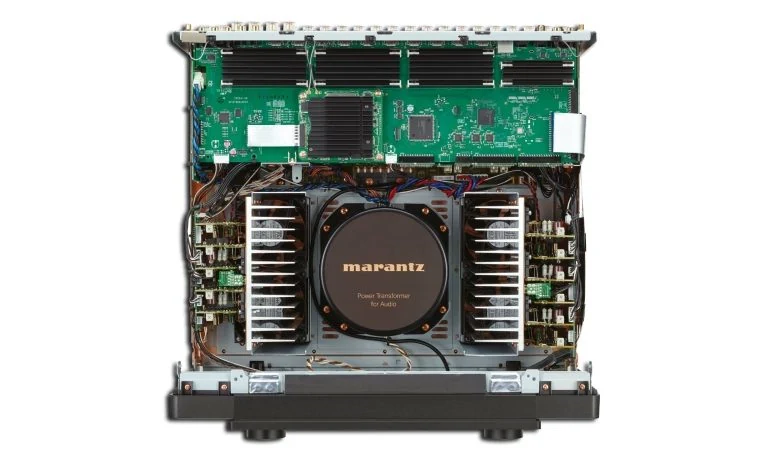
Both receivers produced the rich, musical character Marantz is known for, but the differences became clear under more demanding conditions. The Cinema 40 excels in delivering refined performance in small to medium-sized rooms, while the Cinema 30’s extra power and additional channels make it better suited for larger spaces or enthusiasts seeking maximum immersion.
Winner: Marantz Cinema 30
Video Performance
In our video performance testing, both the Marantz Cinema 30 and Cinema 40 proved to be fully capable receivers for modern home theater and gaming needs. Each model supports 8K UHD with HDR10, HDR10+, Dolby Vision, and Hybrid Log-Gamma, ensuring compatibility with the latest sources and displays. We connected both units to an 8K OLED TV and rotated through UHD Blu-rays, streaming platforms, and next-gen gaming consoles. In every case, video pass-through was clean and stable, with no signs of handshake issues or dropped frames.
When it came to upscaling, we noticed a small distinction. The Cinema 40 upscales 1080p to 8K, while the Cinema 30 offers 8K upscaling across the board. In practice, both receivers handled lower-resolution content gracefully, with the Cinema 30 producing slightly sharper edges and finer detail when feeding 4K material to our 8K display. HDR content was equally impressive on both models. Dolby Vision titles stood out, with rich contrast and vibrant color rendering that made bright highlights and dark shadow detail look natural and well-preserved.
The main difference between the two showed up in HDMI outputs. The Cinema 30 provides three HDMI outputs compared to the Cinema 40’s two, giving us more flexibility during testing when running both a projector and flat-panel display. Gamers will also appreciate that both units support HDMI 2.1 features like 4K/120Hz, 8K/60Hz, VRR, and ALLM. With both a PlayStation 5 and Xbox Series X connected, gameplay was smooth and responsive, with no perceptible lag or screen tearing.
Overall, video performance was excellent on both receivers.
Winner: a Tie
OVERVIEWS:
Marantz Cinema 30
The Marantz Cinema 30, released in 2024, is an 11.4-channel receiver designed as a step up from the Cinema 40, offering 140 watts per channel at 8 ohms. It expands support for large-scale setups, including DTS:X Pro for distributing immersive sound across more speakers. Video handling is future-ready with 8K/60 pass-through, 8K upscaling, and full HDR format support. With seven HDMI 2.1 inputs and three HDMI outputs, it provides additional flexibility for multiple displays or a projector/TV combination. Build quality is noticeably heavier at 42.8 lb, reflecting its more robust amplification and toroidal transformer design. Wireless streaming is extensive, covering AirPlay 2, HEOS, Roon Ready, and popular platforms like Spotify and TIDAL. Like the Cinema 40, it supports both Audyssey MultEQ XT32 and Dirac Live for precise room calibration.
Pros
- Higher channel count and power output
- three HDMI outputs
- DTS:X Pro support
- robust build quality
Cons
- Larger and heavier chassis
- higher power consumption
- premium pricing compared to Cinema 40
Marantz Cinema 40
The Marantz Cinema 40 is a 9.4-channel Class-AB receiver introduced in 2023, delivering 125 watts per channel at 8 ohms. It is well-suited for medium to large home theater setups, offering support for Dolby Atmos, DTS:X, Auro 3D, and IMAX Enhanced for an immersive surround experience. On the video side, it handles 8K UHD with HDR10+, Dolby Vision, and HLG, while 1080p-to-8K upscaling ensures compatibility with modern displays. Connectivity includes seven HDMI inputs and two HDMI outputs, along with digital, analog, and phono inputs. Wireless options cover Wi-Fi, Bluetooth, AirPlay 2, HEOS, and Spotify Connect. Room calibration is handled by both Audyssey MultEQ XT32 and Dirac Live, giving flexibility in setup. At 33.3 lb, it’s lighter than the Cinema 30 but still feels solidly built.
Pros
- Balanced power for 9.4 channels
- excellent format support
- Dirac Live compatibility
- strong streaming features
Cons
- Fewer HDMI outputs than Cinema 30
- less power headroom
- slightly less future-proof for larger systems
Final Verdict
After spending time with both the Marantz Cinema 30 and Cinema 40, it’s clear that they share the same design DNA but are aimed at slightly different audiences. The Cinema 40 is the more approachable option: a powerful 9.4-channel receiver with excellent format support, reliable Dirac Live room correction, and enough HDMI connectivity for most home theaters. It’s lighter, easier to fit into a rack, and offers strong performance without pushing into overkill territory.
The Cinema 30, on the other hand, is designed for enthusiasts who want more headroom and flexibility. Its 11.4-channel design, 140 W per channel power rating, and DTS:X Pro support make it a better fit for large rooms or advanced multi-speaker layouts. The addition of a third HDMI output and its more substantial build further position it as a true flagship in Marantz’s lineup. Of course, it comes at a higher cost and with greater size and weight, so it may be more than some setups require. (Get the Best Deal on Amazon Today!)
In short, the Cinema 40 will suit most users looking for a premium receiver with all the essentials, while the Cinema 30 is the choice for those seeking maximum immersion, flexibility, and long-term investment in a reference-grade system.
